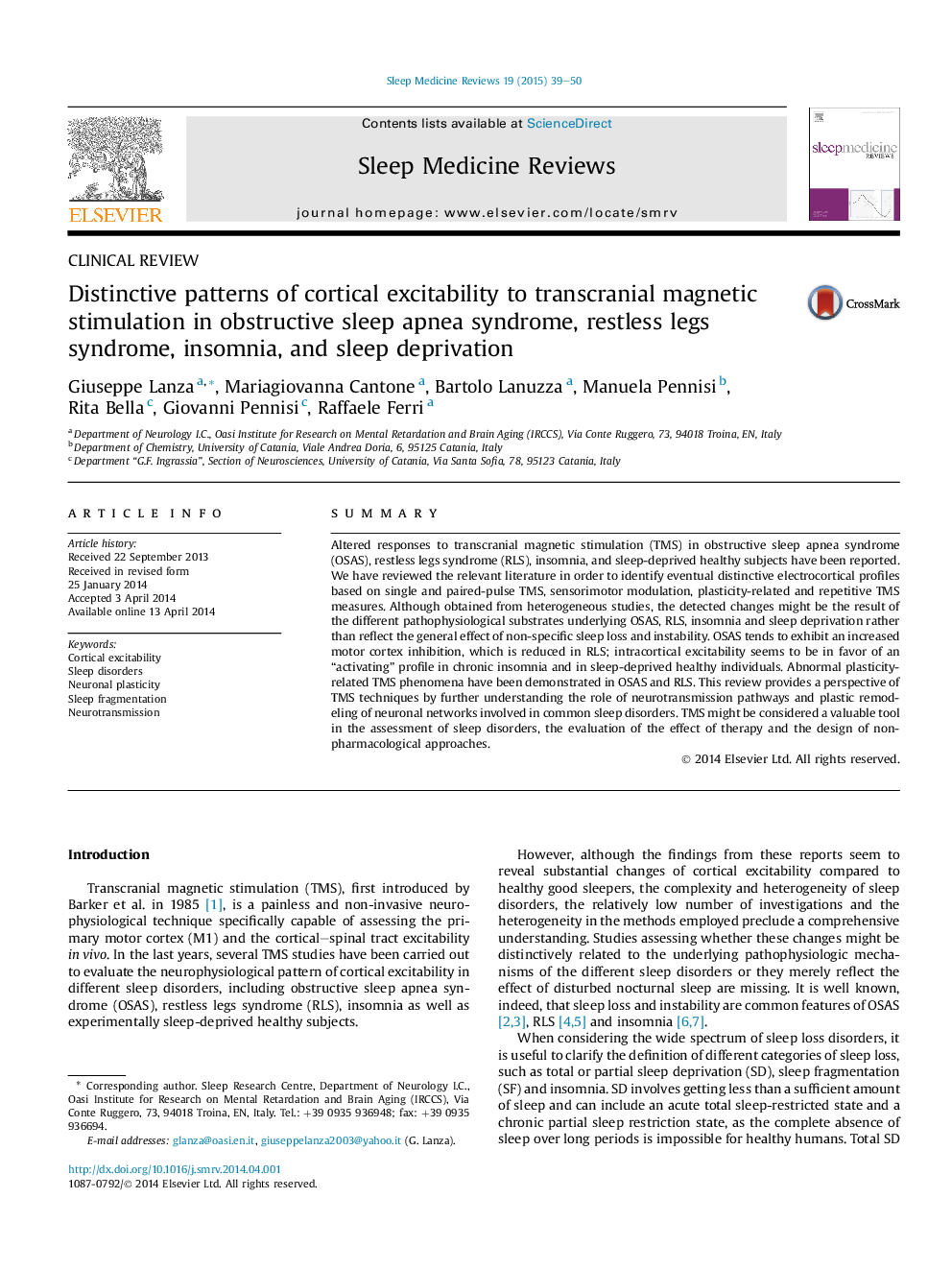| Article ID | Journal | Published Year | Pages | File Type |
|---|---|---|---|---|
| 3091440 | Sleep Medicine Reviews | 2015 | 12 Pages |
SummaryAltered responses to transcranial magnetic stimulation (TMS) in obstructive sleep apnea syndrome (OSAS), restless legs syndrome (RLS), insomnia, and sleep-deprived healthy subjects have been reported. We have reviewed the relevant literature in order to identify eventual distinctive electrocortical profiles based on single and paired-pulse TMS, sensorimotor modulation, plasticity-related and repetitive TMS measures. Although obtained from heterogeneous studies, the detected changes might be the result of the different pathophysiological substrates underlying OSAS, RLS, insomnia and sleep deprivation rather than reflect the general effect of non-specific sleep loss and instability. OSAS tends to exhibit an increased motor cortex inhibition, which is reduced in RLS; intracortical excitability seems to be in favor of an “activating” profile in chronic insomnia and in sleep-deprived healthy individuals. Abnormal plasticity-related TMS phenomena have been demonstrated in OSAS and RLS. This review provides a perspective of TMS techniques by further understanding the role of neurotransmission pathways and plastic remodeling of neuronal networks involved in common sleep disorders. TMS might be considered a valuable tool in the assessment of sleep disorders, the evaluation of the effect of therapy and the design of non-pharmacological approaches.
